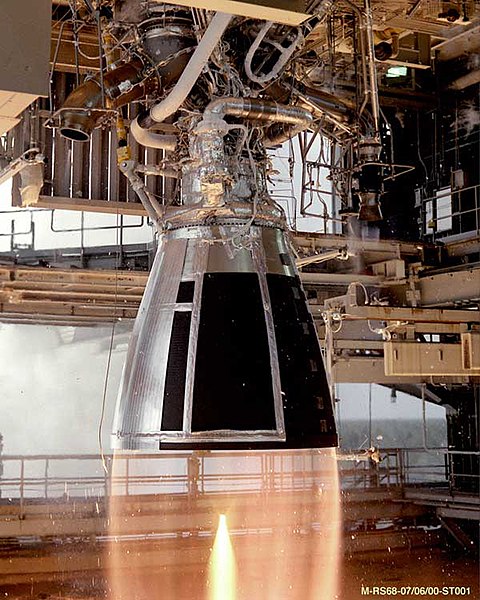RS-68 being tested at NASA's Stennis Space Center. The nearly transparent exhaust is due to this engine's exhaust being mostly superheated steam (water vapor from its propellants, hydrogen and oxygen)
A rocket engine or simply "rocket" is a jet engine that uses only propellant mass for forming its high speed propulsive jet. Rocket engines are reaction engines and obtain thrust in accordance with Newton's third law. Since they need no external material to form their jet, rocket engines can be used for spacecraft propulsion as well as terrestrial uses, such as missiles. Most rocket engines are internal combustion engines, although non combusting forms also exist.
Rocket motor is a synonymous term that usually refers to solid rocket engines. Chemical rockets are rockets powered by exothermic chemical reactions of the propellant. Thermal rockets are rockets where the propellant is inert, but is heated by a power source such as solar or nuclear power.
Rocket engines as a group, have the highest exhaust velocities, are by far the lightest, and are the most energy efficient (at least at very high speed) of all types of jet engines. However, for the thrust they give, due to the high exhaust velocity and relatively low specific energy of rocket propellant, they consume propellant very rapidly.
Source : Wikipedia


No comments:
Post a Comment